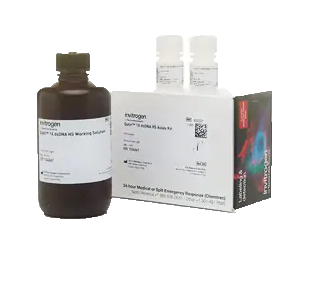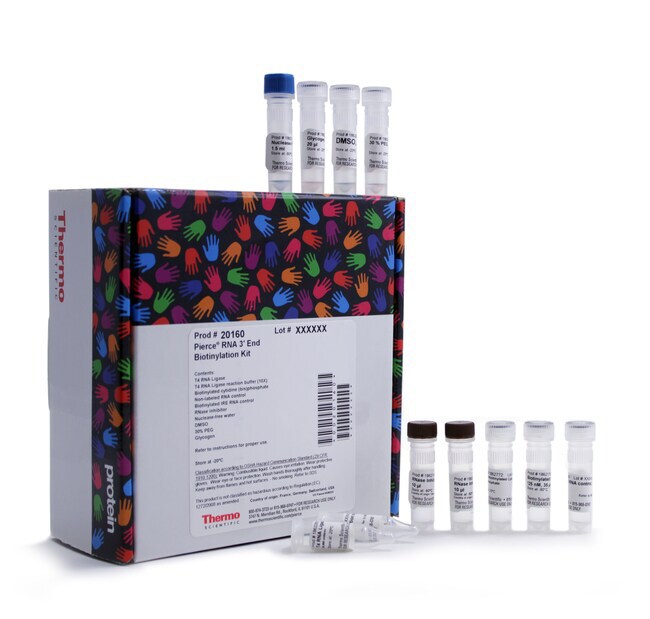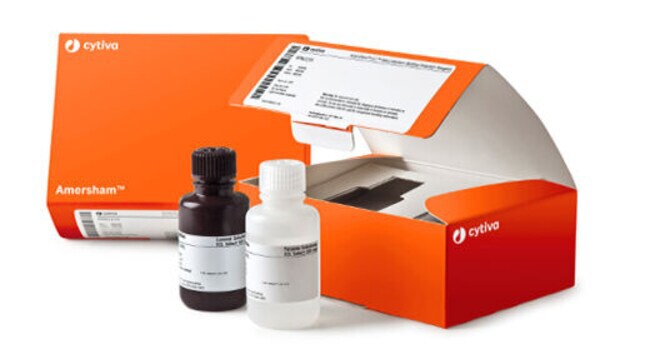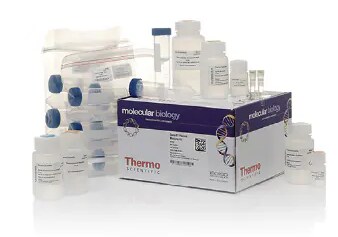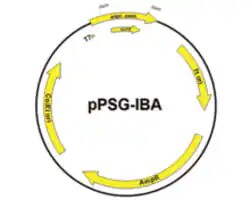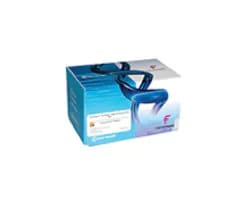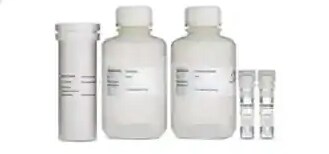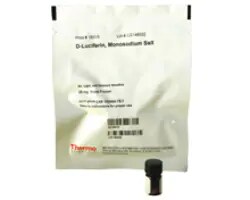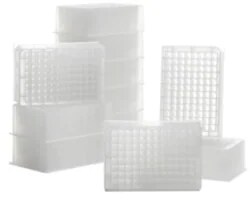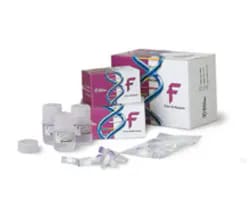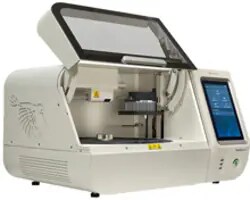Useful Links
Save Now - Exclusive Deals
Product Code 15860210
Product Code 17129625
Product Code 11620129
Product Code 10320455
Product Code 10005653
Product Code 10036813
Product Code 10156414
Product Code 10188593
Product Code 7235457
Product Code 10780910
Product Code 7235446
Product Code 11814564
Must Have
Product Code 10470705
Product Code 10566875
Product Code 7235453
Product Code 10387943
Product Code 10553853
Product Code 10706421
Complete Your Order - Great Deals
Product Code 4525228
Product Code 17671546
Product Code 11568976
FAQ
Nucleic acid labeling refers to the process of attaching a detectable marker or label to a nucleic acid molecule (DNA or RNA). This labeling allows for the visualization, detection, and quantification of nucleic acids in various molecular biology applications. There are several types of labels used, each with its specific advantages and applications:
- Radioactive Labels: incorporation of radioactive isotopes into nucleic acids. Detection occurs using autoradiography or scintillation counting. Radioactive Labels are highly sensitive but require special handling and disposal protocols due to radioactivity.
- Fluorescent Labels: attachment of fluorophores (e.g., FITC, Cy3, Cy5) to nucleic acids. Detection occurs using fluorescence microscopy, flow cytometry, or fluorescence spectrometry. They provide high sensitivity and allows for multiplexing (using multiple fluorophores).
- Enzymatic Labels: conjugation of enzymes (e.g., horseradish peroxidase, alkaline phosphatase) to nucleic acids. Detection occurs using colorimetric, chemiluminescent, or fluorescent substrates. They are useful for applications like blotting (Southern, Northern) and in situ hybridization.
- Biotin Labels: attachment of biotin to nucleic acids and detected using streptavidin or avidin conjugated to enzymes or fluorophores. They provide strong and specific binding, useful for various applications.
- Digoxigenin (DIG) Labels: incorporation of DIG, a steroid hapten, into nucleic acids. Detection occurs using anti-DIG antibodies conjugated to enzymes or fluorophores. These are useful for non-radioactive labeling and detection.
Methods of Labeling:
- Nick Translation: DNA is treated with DNase to introduce nicks, and then DNA polymerase I is used to incorporate labeled nucleotides at the nicks.
- Random Primed Labeling: Random hexamer primers are used to initiate DNA synthesis, incorporating labeled nucleotides.
- PCR-based Labeling: Labeled nucleotides are incorporated during PCR amplification.
- End Labeling: Labeling at the 5' or 3' ends of nucleic acids using enzymes like T4 polynucleotide kinase or terminal deoxynucleotidyl transferase.
- In Vitro Transcription: Incorporation of labeled nucleotides during transcription of RNA from a DNA template.
There are several methods for the detection of nucleic acids, each with its own advantages and applications. Some of the most common methods are:
- Polymerase Chain Reaction (PCR): a widely used technique to amplify DNA sequences. Variations include quantitative PCR (qPCR) for measuring the amount of DNA and reverse transcription PCR (RT-PCR) for RNA detection.
- Gel Electrophoresis:uUsed to separate nucleic acids based on size. Often combined with staining methods (e.g., ethidium bromide) to visualize DNA or RNA.
- Southern Blotting: used for DNA detection. Involves transferring DNA from a gel to a membrane followed by hybridization with a labeled probe.
- Northern Blotting: similar to Southern blotting but used for RNA detection.
- In Situ Hybridization (ISH): detects nucleic acids within fixed tissues or cells using labeled probes.
- Next-Generation Sequencing (NGS): high-throughput sequencing methods to analyze DNA and RNA sequences.
- Microarrays: used for analyzing gene expression or for genotyping. Consists of a grid of DNA probes that hybridize with target nucleic acids.
- CRISPR-based Detection: uses CRISPR/Cas systems for specific nucleic acid detection. Examples include SHERLOCK and DETECTR.
- Fluorescence In Situ Hybridization (FISH): uses fluorescent probes to detect specific nucleic acid sequences in intact cells.
- Loop-Mediated Isothermal Amplification (LAMP): amplifies nucleic acids at a constant temperature. Useful for rapid and point-of-care testing.
- Digital PCR: allows for absolute quantification of nucleic acids by partitioning the sample into many individual reactions.
- Nanopore Sequencing: Detects nucleic acids by measuring changes in electrical conductivity as DNA or RNA molecules pass through a nanopore.
These methods can be used in various applications, including clinical diagnostics, research, forensic science, and biotechnology.
Nucleic acid labeling and detection are critical processes in molecular biology, diagnostics, and research, but they come with several challenges. Here are some common challenges:
- Sensitivity and Specificity: detecting low-abundance nucleic acids can be challenging, especially in samples with low target concentration or in complex mixtures. Achieving high specificity to distinguish between similar sequences or to avoid cross-reactivity with non-target nucleic acids is essential but can be difficult. Incorporate mismatch-tolerant or locked nucleic acid (LNA) bases to increase specificity.
- Label Stability and Efficiency: some labels may degrade or lose their signal over time, affecting the reliability of detection. Ensuring that labels are efficiently and uniformly incorporated into nucleic acids is crucial for consistent results.
- Background Noise and Non-Specific Binding: high background signals can obscure the detection of target nucleic acids, reducing the signal-to-noise ratio. Non-Specific Binding between probes and non-target sequences can lead to false positives and inaccurate results. Use blocking agents (e.g., BSA, salmon sperm DNA) during hybridization to reduce non-specific binding. Implement stringent wash steps to remove non-specifically bound probes or labels. Include negative controls to distinguish between true signals and background noise.
- Sample Quality and Preparation: nucleic acids can degrade during sample collection, storage, or processing, impacting detection sensitivity. Contaminants in the sample (e.g., proteins, salts, or other nucleic acids) can interfere with labeling and detection processes. Use appropriate sample collection, storage, and processing techniques to prevent nucleic acid degradation (e.g., using RNase inhibitors for RNA samples).
- Multiplexing: detecting multiple targets simultaneously (multiplexing) can be complex and may require careful selection of compatible labels and detection strategies. Fluorescent labels used in multiplexing can sometimes exhibit spectral overlap, leading to cross-talk between channels. Select fluorescent labels with minimal spectral overlap and use appropriate filters or detection systems to reduce cross-talk.
- Quantification Accuracy: achieving a wide dynamic range for quantification can be challenging, especially for methods like qPCR. Ensuring accurate and reproducible quantification across different samples and experiments requires careful standardization and calibration.
